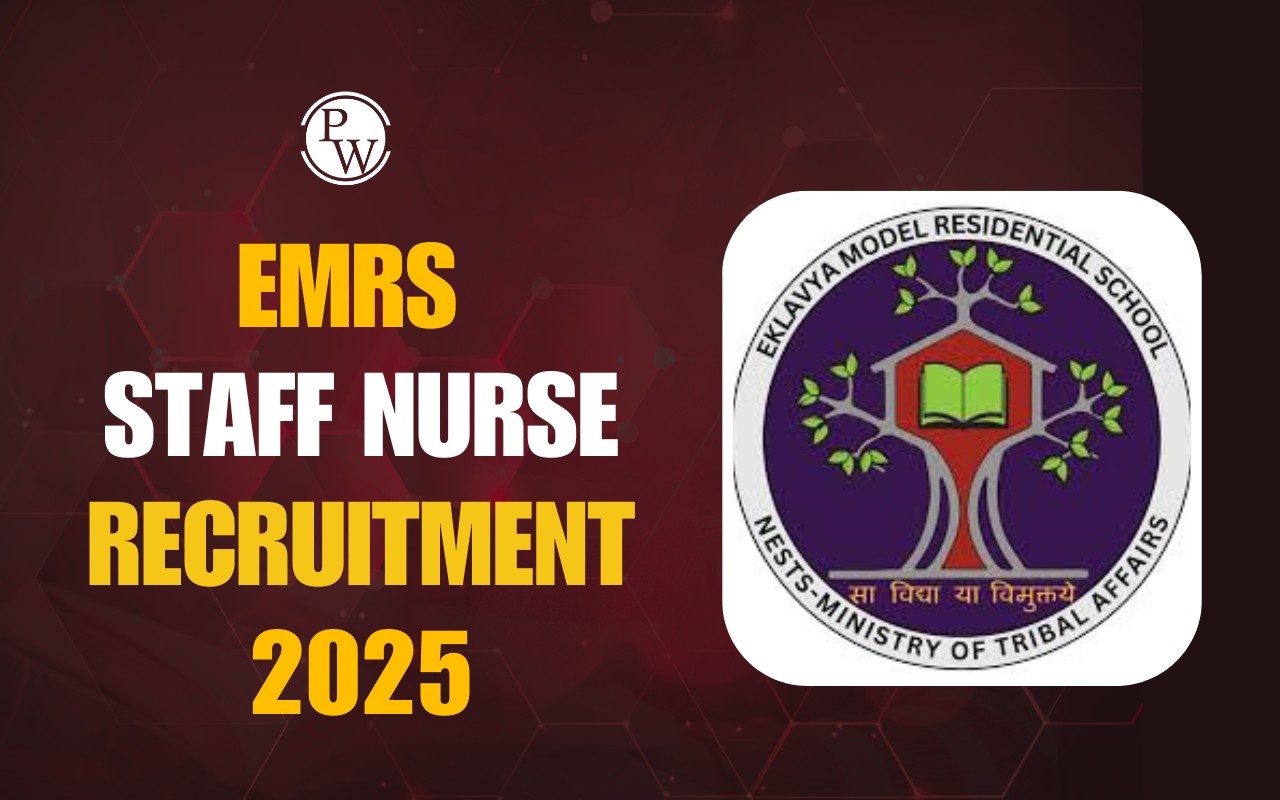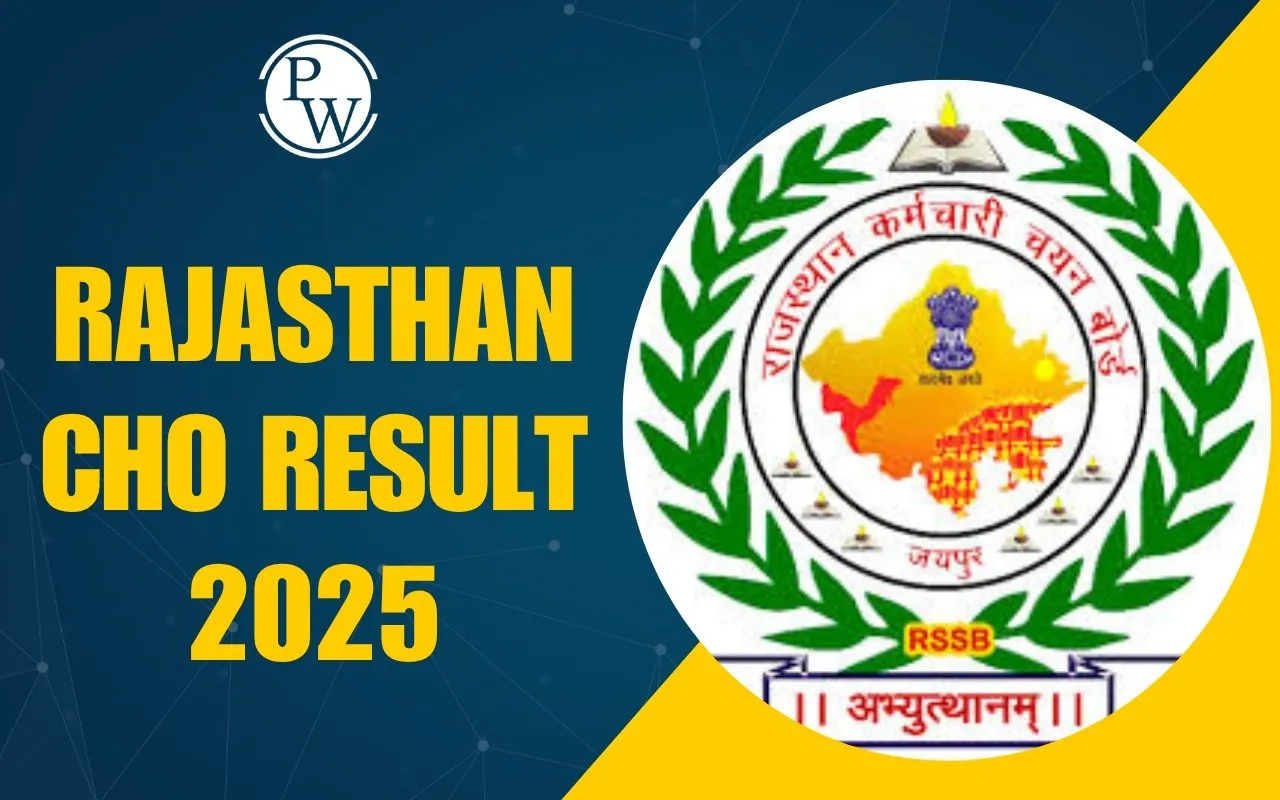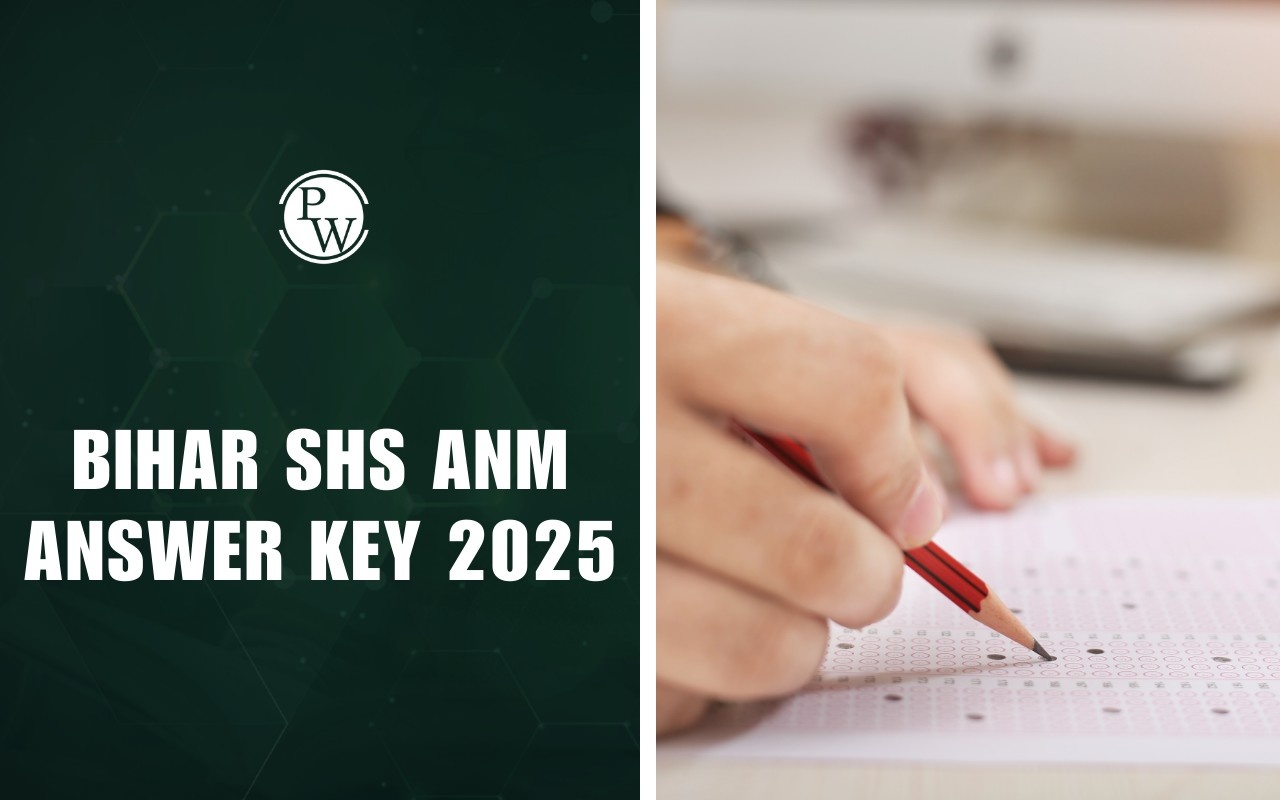
AIIMS NORCET 8 Exam Analysis 2025: The AIIMS NORCET (All India Institute of Medical Sciences Nursing Officer Recruitment Common Eligibility Test) 8 Mains Exam Analysis 2025 provides candidates with crucial insights into the exam's structure and preparation strategies. Scheduled for May 2nd, 2025, this highly competitive exam consists of two stages: Prelims and Mains, which assess knowledge in both nursing and general subjects.
The Prelims will have 100 questions, with 80 focused on nursing and 20 on non-nursing topics, while the Mains will consist of 160 questions, with a greater emphasis on clinical and practical nursing knowledge. The difficulty level is moderate to challenging, requiring thorough preparation. Candidates should stay updated on the official cut-off details, which will be announced closer to the exam. To succeed, it is important to understand the syllabus, focus on core nursing subjects, stay informed on current affairs, and regularly practice with mock tests to improve time management skills. Following these strategies will help increase the chances of securing a nursing officer position at prestigious AIIMS institutions.
AIIMS NORCET 8 Exam Analysis 2025 Overview
AIIMS NORCET 8 is set to recruit nursing officers across various AIIMS institutions, including AIIMS Delhi. The exam will consist of two major stages: the Preliminary (Prelims) and Main (Mains) exams. The total vacancies and exact distribution will be announced closer to the exam date, but candidates can expect a large number of positions across different categories.
|
Particulars |
Details |
|
Organization |
All India Institute of Medical Sciences (AIIMS) |
|
Exam Name |
AIIMS NORCET 8 |
|
Vacancies |
2245 |
|
Exam Frequency |
Twice a year (typically) |
|
Stages |
Prelims and Mains |
|
Exam Mode |
Online CBT (Computer-Based Test) |
|
Question Type |
Multiple Choice Questions (MCQs) |
|
Duration |
Prelims: 90 minutes, Mains: 3 hours |
|
Negative Marking |
1/3 Marks for each incorrect answer |
|
Official Website |
Important Dates for AIIMS NORCET 8 (2025)
The AIIMS NORCET 8 (2025) exam is fast approaching, and it’s crucial for candidates to stay on top of the important dates. Here’s a quick overview of the key dates you need to know for a successful application and preparation journey.
|
Event Name |
Date |
|
Prelims Exam Date |
April 12, 2025 |
|
Mains Exam Date |
2 May 2025 |
|
Prelims Result Declaration |
April 19, 2025 |
|
Mains Result Declaration |
To be Announced |
AIIMS NORCET 8 Prelims Exam Analysis 2025 Out
The AIIMS NORCET 8 Exam analysis is released on 12th April 2025 after the examination. The PW Experts provide the AIIMS NORCET 8 Exam Analysis 2025. The Exam is moderate to difficult, check the exam analysis for detailed knowledge.
AIIMS NORCET 8 Mains Exam Analysis 2025 (Out)
AIIMS NORCET 8 Mains Exam 2025 was conducted today, and candidates across various centers participated in this competitive nursing recruitment test. The official exam analysis is expected to be released soon, providing insights into the overall difficulty level, topic-wise weightage, and the types of questions asked. Based on early student reactions, the paper was moderately difficult, with a balanced mix of clinical, theoretical, and reasoning-based questions. Once the detailed analysis is available, it will help aspirants evaluate their performance and estimate the expected cutoff.
AIIMS NORCET 8 Exam Analysis 2025 Difficulty Level
The AIIMS NORCET exams are recognized for their moderate to challenging difficulty based on past trends, requiring candidates to be well-prepared across a range of subjects. The difficulty level for both Prelims and Mains exams will be informed here after the exam on Prelims 12 April 2025 and Mains on 2nd May 2025:
|
Stage |
Subject |
Difficulty Level |
|
Prelims |
General Knowledge & Aptitude |
Moderate |
|
Nursing Subject |
Moderate to Difficult |
|
|
Mains |
General Knowledge & Aptitude |
Moderate |
|
Nursing Subject |
Moderate to Difficult |
AIIMS NORCET 8 Prelims Exam Analysis 2025 Good Attempts
The AIIMS NORCET 8 Exam Analysis 2025 Good Attempts is now available as the exam concluded, based on the actual difficulty level and the accuracy of responses. The estimation is provided below as the exam is conducted. Keep an eye out for updates post-exam.
|
Section |
Good Attempts |
|
Nursing Subjects (Core) |
65-70 |
|
Non-Nursing Subjects |
10-15 |
|
Overall |
80-90 |
AIIMS NORCET 8 Mains Exam Analysis 2025 Good Attempts
AIIMS NORCET 8 Mains Exam 2025 was conducted recently, and candidates are eagerly awaiting a detailed analysis to understand the exam's overall difficulty level and ideal number of good attempts. The “Good Attempts” section helps determine how many questions a candidate should have attempted accurately to remain competitive for selection. While the official data and expert analysis are expected shortly, a tentative analysis will be shared here once inputs from students and experts are compiled. Stay tuned for the official update.
| Section | Total Questions | Difficulty Level | Expected Good Attempts |
|---|---|---|---|
|
AIIMS NORCET 8 Mains Exam Good Attempts |
160 | Moderate to Difficult | 120-140 |
Topics Asked in Exam AIIMS NORCET 8 Prelims Exam
-
Core Nursing (e.g., ABG/VBG, COPD, burns, MgSO₄ therapeutic indicators)
-
Pharmacology (e.g., morphine dose, insulin, fluoxetine, penicillin discovery)
-
OBG (e.g., bandl’s ring, placental images, fertile window)
-
General Knowledge (e.g., national aquatic animal, missile man of India)
-
Reasoning (ranking type questions: P < R, S < R, etc.)
-
Research Methodology (10-year study = longitudinal study)
-
Image-based questions (X-ray, placenta, malformed baby)
-
Devices (e.g., Ambu bag components)
AIIMS NORCET 8 Exam Pattern 2025
The AIIMS NORCET 8 exam will be divided into two stages, with a clear focus on assessing candidates’ knowledge in nursing and general subjects. Here’s an in-depth look at both stages:
Prelims Exam Pattern (2025):
The Prelims will consist of 100 questions, with a balanced mix of nursing and non-nursing subjects. This stage is crucial for filtering candidates who will proceed to the Mains exam. The Prelims exam will have the following structure:
|
Subjects |
Number of Questions |
Time Duration |
|
Nursing Subjects |
80 |
90 minutes |
|
Non-Nursing Subjects |
20 |
90 minutes |
|
Total |
100 |
90 minutes |
The non-nursing subjects typically include General Knowledge, Aptitude, and English, while the majority of questions (80) will focus on nursing-related topics.
Mains Exam Pattern (2025):
Candidates who clear the Prelims will proceed to the Mains exam. The Mains exam is more detailed, consisting of 160 questions, with a more extensive focus on clinical and practical aspects of nursing.
|
Subjects |
Number of Questions |
Time Duration |
|
Nursing Subjects |
140 |
180 minutes |
|
Non-Nursing Subjects |
20 |
180 minutes |
|
Total |
160 |
180 minutes |
Candidates should focus on strengthening their clinical knowledge in nursing and healthcare practices in preparation for this stage.
Cut-off Prediction & Guidance
-
65+ Correct Attempts → Likely to qualify prelims
-
70–75+ Confident Attempts → Start Mains preparation immediately
-
Those who attempted ~60 may qualify but may not clear mains cut-off.
Question Asked in AIIMS NORCET 8 Mains Exam 2025
The questions shared here are memory-based, compiled from student reviews to offer a better understanding of frequently asked topics. These questions cover a range of subjects and have been converted into MCQ format for convenient study. They are designed to help you revise effectively and prepare for exams.
Q1. National De-worming Day is observed on which date in India?
A. 15 March
B. 10 February
C. 5 April
D. 12 January
Answer: B. 10 February
Explanation: National De-worming Day is a government initiative observed on 10th February every year to reduce worm infestations among children aged 1–19 years.
Q2. Which of the following is a characteristic feature of Melancholic Depression?
A. Increased appetite
B. Euphoric mood
C. Psychomotor retardation and early morning awakening
D. Hallucinations
Answer: C. Psychomotor retardation and early morning awakening
Explanation: Melancholic depression is characterized by features like loss of pleasure, psychomotor retardation, excessive guilt, early morning waking, and a lack of emotional response to events.
Q3. Which type of depression is most commonly treated with Electroconvulsive Therapy (ECT)?
A. Atypical depression
B. Situational depression
C. Melancholic depression
D. Dysthymia
Answer: C. Melancholic depression
Explanation: Electroconvulsive Therapy (ECT) is particularly effective in treating severe forms of depression like melancholic depression, especially when other treatments fail.
Q4. A patient’s ABG report shows: pH 7.30, PaCO₂ 50 mmHg, HCO₃⁻ 24 mEq/L. What is the most likely acid-base disturbance?
A. Respiratory alkalosis
B. Metabolic acidosis
C. Respiratory acidosis
D. Metabolic alkalosis
Answer: C. Respiratory acidosis
Explanation: The pH is low, and the PaCO₂ is high, indicating respiratory acidosis. The bicarbonate (HCO₃⁻) level is normal, which further supports an uncompensated respiratory acidosis.
Q5. While performing an Arterial Blood Gas (ABG) sampling, what should be the correct hand position of the patient?
A. Pronation
B. Supination
C. Flexion
D. Extension
Answer: B. Supination
Explanation: The wrist should be kept in supination to expose the radial artery properly during ABG sampling.
Q6. If an ABG sample is not refrigerated and left for a long time, what will happen to the pH?
A. pH remains unchanged
B. pH increases
C. pH decreases
D. HCO₃⁻ increases
Answer: C. pH decreases
Explanation: If an ABG sample is not refrigerated, metabolism by the cells in the blood will continue, producing CO₂, which leads to a drop in pH.
Q7. What is the most critical nursing action before administering Digoxin?
A. Measure blood pressure
B. Check serum potassium
C. Count radial pulse for 30 seconds
D. Count apical pulse for 1 full minute
Answer: D. Count apical pulse for 1 full minute
Explanation: Before administering Digoxin, it’s crucial to check the apical pulse for a full minute. If it is below 60 beats per minute (for adults), the medication should be withheld to prevent bradycardia.
Q8. What is the most accurate site for assessing pulse before administering Digoxin?
A. Radial
B. Apical
C. Brachial
D. Femral
Answer: B. Apical
Explanation: The apical pulse, assessed at the apex of the heart using a stethoscope, is the most accurate site for checking pulse rate, especially before administering Digoxin.
Q9. What is an important nursing responsibility while administering lithium?
A. Monitor serum sodium
B. Check blood glucose
C. Assess pupil size
D. Monitor serum lithium level
Answer: D. Monitor serum lithium level
Explanation: Lithium has a narrow therapeutic range. It's essential to monitor serum lithium levels to avoid toxicity, which can occur if the level exceeds 1.5 mEq/L.
Q10. A patient’s ABG shows: pH 7.29, PaCO₂ 55 mmHg, HCO₃⁻ 24 mEq/L. What is the condition?
A. Uncompensated metabolic acidosis
B. Compensated respiratory acidosis
C. Uncompensated respiratory acidosis
D. Metabolic alkalosis
Answer: C. Uncompensated respiratory acidosis
Explanation: The low pH and high PaCO₂ suggest a primary respiratory acidosis without any compensation yet, as the bicarbonate remains at normal levels.
Q11. A pregnant woman at 28 weeks gestation presents with painless vaginal bleeding. What is the most probable diagnosis?
A. Abruptio placentae
B. Placenta previa
C. Uterine rupture
D. Ectopic pregnancy
Answer: B. Placenta previa
Explanation: Placenta previa is characterized by painless vaginal bleeding, typically in the second or third trimester of pregnancy, as the placenta lies low in the uterus.
Q12. What is the most serious complication associated with Kawasaki Disease?
A. Seizures
B. Coronary artery aneurysm
C. Pulmonary edema
D. Hepatomegaly
Answer: B. Coronary artery aneurysm
Explanation: The major complication of Kawasaki disease is the development of coronary artery aneurysms, which can result in myocardial infarction in children.
Q13. A client is found unresponsive. What is the first action the nurse should take?
A. Start chest compressions
B. Check for a pulse
C. Check airway and breathing
D. Call for help
Answer: C. Check airway and breathing
Explanation: The first step in Basic Life Support (BLS) for an unresponsive patient is to assess the airway and breathing. If there is no breathing, initiate CPR and call for help.
Q14. Which of the following conditions is associated with wide pulse pressure?
A. PDA
B. ASD
C. VSD
D. TOF
Answer: A. PDA
Explanation: Patent ductus arteriosus (PDA) is associated with a wide pulse pressure due to continuous blood flow from the aorta to the pulmonary artery, leading to a bounding pulse and decreased diastolic pressure.
Q15. What is the nurse’s priority intervention for a newborn with an Apgar score of less than 4 at 1 minute?
A. Administer vitamin K
B. Begin resuscitation
C. Provide phototherapy
D. Perform eye care
Answer: B. Begin resuscitation
Explanation: An Apgar score below 4 indicates severe distress, and immediate resuscitation (warm, clear airway, stimulate breathing) is the priority intervention.
Q16. A neonate is crying excessively in the NICU. What is the most appropriate intervention?
A. Administer paracetamol
B. Offer feeding or check emotional comfort
C. Apply oxygen hood
D. Start antibiotics
Answer: B. Offer feeding or check emotional comfort
Explanation: Excessive crying in neonates often indicates hunger or the need for emotional comfort. The nurse should check for basic needs first before escalating to more invasive interventions.
Q17. What is the priority care for a premature baby?
A. Provide oxygen therapy
B. Maintain patent airway & thermoregulation
C. Administer fluids
D. Start antibiotics
Answer: B. Maintain patent airway & thermoregulation
Explanation: Premature babies are at risk for hypothermia and respiratory distress. Ensuring a patent airway and maintaining body temperature are the top priorities.
Final AIIMS NORCET 8 Cut Off 2025
The AIIMS NORCET 8 cut off 2025 details will be released soon, providing candidates with the required percentile for each category to qualify for the exam. Stay tuned for the official announcement of the cut-off scores for both general and PWBD candidates.
|
S. No. |
Category |
Cut-Off Percentile |
PWBD Cut-Off Percentile |
|
1 |
UR |
To Be Announced |
To Be Announced |
|
2 |
EWS |
To Be Announced |
To Be Announced |
|
3 |
OBC |
To Be Announced |
To Be Announced |
|
4 |
SC |
To Be Announced |
To Be Announced |
|
5 |
ST |
To Be Announced |
To Be Announced |
AIIMS NORCET 8 City Intimation Slip 2025 (Out)
AIIMS NORCET 7 Cut Off (Previous Year)
Here’s a breakdown of the expected cut-off for both Prelims and Mains stages based on trends from AIIMS NORCET 7. These figures can help candidates estimate the required scores for qualifying the exams. Candidates should aim for a score above these cut-offs to increase their chances of qualifying both stages of the AIIMS NORCET 8 exam.
AIIMS NORCET 7 Prelims CutOff
The Prelims Cut-Off for AIIMS NORCET 7 will vary by category, with candidates required to meet or exceed the specified percentile to qualify for the Mains exam.
|
S. No. |
Category |
Cut-Off Percentile |
PWBD Cut-Off Percentile |
|
1 |
UR |
95.84 |
45.47 |
|
2 |
EWS |
77.90 |
46.29 |
|
3 |
OBC |
88.26 |
40.56 |
|
4 |
SC |
85.65 |
36.47 |
|
5 |
ST |
80.59 |
38.17 |
AIIMS NORCET 7 Mains Cut Off
The Mains Cut-Off for AIIMS NORCET 7 will vary by category, with candidates required to meet or exceed the specified percentile to qualify for the Mains exam.
|
S. No. |
Category |
Percentage Cut-Off |
|
1 |
UR/EWS |
50% |
|
2 |
OBC |
45% |
|
3 |
SC/ST |
40% |
|
4 |
UR-PWBD |
46.46% |
|
5 |
EWS-PWBD |
46% |
|
6 |
OBC-PWBD |
40.83% |
|
7 |
SC-PWBD |
35.21% |
|
8 |
ST-PWBD |
35.42% |
AIIMS NORCET 8 2025 presents an incredible opportunity for aspiring nursing officers. With a structured exam pattern, moderate to challenging difficulty levels based on past trends, and ample time for preparation, candidates have the chance to secure a position in one of India’s top medical institutions. By understanding the exam structure, analyzing the difficulty levels, and adopting the right preparation strategies, candidates can increase their chances of success.
Explore the Nursing Courses 2025 to access essential resources for Nursing exam preparation, including detailed insights and strategies. Dive into the Nursing 2025 for structured courses and focused study plans designed to help aspirants excel in their exams.
AIIMS NORCET 8 Exam Analysis 2025 FAQs
What is the exam pattern for AIIMS NORCET 8?
When is the AIIMS NORCET 8 exam scheduled?
What is the difficulty level of the AIIMS NORCET 8?
What is the expected cut-off for AIIMS NORCET 8?
What are the best strategies for preparing for AIIMS NORCET 8?










